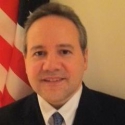MarketMuse blog update profiles Nasdaq recent agreement to power a new marketplace from bitcoin trading. Bitcoins are the largest decentralized digital currency in the market and has been taking the investment world by storm since its introduction in 2009 by its founder, Satoshi Nakamoto. MarketMuse blog update is courtesy of Nasdaq’s article, “Nasdaq to Provide Trading Technology for Bitcoin Marketplace — Update” with excerpts from the article below.
Nasdaq OMX Group Inc. has agreed to provide New York-based startup Noble Markets with core technology to power a new marketplace aimed at allowing companies and institutional investors such as hedge funds to trade bitcoin and related digital-currency assets.
According to a joint statement provided to The Wall Street Journal, Noble’s platform will use Nasdaq’s X-stream trading system, a high-tech system for matching market participants’ orders that is used by more than 30 exchanges and marketplaces worldwide. Nasdaq will also provide marketing support.
The agreement follows other Wall Street initiatives that could pave the way for financial institutions to own and trade digital currencies, which fans say have the potential to make the global financial system more efficient but which have also been marred by price fluctuations, investment scams and cybersecurity concerns.
Recent developments include: the New York Stock Exchange’s investment in bitcoin exchange Coinbase; regulatory approval of public trading in the Digital Currency Group’sBitcoin Investment Fund; former J.P. Morgan Chase & Co. executive Blyth Masters’ appointment to a lead new digital-asset settlement service; and news earlier Monday that former NYSE Chief Executive Duncan Niederauer will work as an adviser to bitcoin derivatives platform TeraExchange.
To read the entire article from Nasdaq, click here.





